When an employee decides to resign, they take with them one of your organization's most critical assets - their knowledge. To make up for this loss, you may choose to hire a new employee, but what about the talent, expertise, and knowledge these individuals brought to your business during their time? How do you recover or manage this knowledge?
In a recent Forbes Technology Council article, our CEO Marc Vontobel challenges businesses to rethink what we should demand from workplace technologies and address organizations' rapid loss in knowledge during the Great Reshuffle.
With employees shifting jobs in unprecedented numbers, rapid action is needed from businesses to stem the knowledge drain.
In the U.S., nearly 3% of the total workforce resigned in October alone, on the back of a record-breaking number of resignations in September.
Employees are right to demand opportunities that offer them fulfillment, career development and a great work-life balance. However, business leaders face serious challenges during this upheaval. Estimates suggest replacing an employee can cost up to a third of their annual salary.
And this is before we get onto the hidden costs that come with the knowledge lost every time an employee leaves. When a person leaves, the company loses not just a job title and number on a sheet but all the talent, expertise and knowledge that individual brought to the business.
Rethinking what we demand from workplace technology is the only way to rapidly address turnover and knowledge loss. We can do this by, first and foremost, using technology to nurture a more empowered, satisfied workforce, which will be less likely to want to shuffle jobs. And second, it will involve streamlining access to knowledge for new hires and the retainment of key information after someone moves on.
In this way, we can optimize our businesses for continuity, innovation and stability; make workplaces more satisfying; and avoid the need to reinvent the wheel every time a new hire joins or an expert retires.
How To Retain More Than Digital Breadcrumbs
In many businesses, when an employee moves to a new job, all that’s left behind is a digital shadow. Their knowledge, expertise and experience disappear, and new hires and old colleagues alike struggle to fill the gaps. A trail of data breadcrumbs that lead to nowhere — old messages, outdated docs and dusty email chains — are often all busy ex-teammates are left to rely on. As a result, business productivity suffers.
Of course, this isn’t the fault of the person who has moved roles. Their expertise belongs to them, and too often, organizations undervalue that expertise, further fuelling resignations. It’s in the hands of businesses to do more to retain business-critical knowledge and smooth the transition for new teammates. Nobody should be having to rely on guesswork from day one. And if they are, chances are they too won’t stick around for long.
To overcome these challenges, we need to think innovatively and start optimizing our tech stacks to reduce knowledge drain and fast-track problem-solving. The solution isn’t more collaboration or communication apps. People already have dozens of tools at their disposal and thousands of messages to search through. These often only slow things down.
What we need is a new layer of knowledge discovery and documentation added to our existing toolsets.
Future-Proofing Knowledge Management And Collaboration
Imagine you’re visiting a new town for the first time. As you hop off the train, you’ll likely have a map at hand, whether it’s an app or on paper, because wherever you are, you need to be able to navigate the world to get from A to B. Meanwhile, as most tourists discover at one point or another, guesswork in these situations tends to lead to disaster.
The same is true of organizations and their knowledge. We need to know where knowledge resides and how to access it, whether that is readily documented or in the mind of a colleague who has the know-how and experience to help. But too often, we’re left stranded without any insight into that network. Searching through emails or collaboration tools is like relying on a guidebook from 20 years ago: You’ve got no idea what’s still relevant and you may well end up more lost than when you started.
Creating that map and giving it to employees is what businesses need to focus on. And it’s within reach. Drawing on new technology like AI, it’s possible to pull from all the information available in a business and use it to both map where knowledge resides (beyond barriers like team silos) and connect employees to that knowledge. This can tackle the root causes of trends like the Great Resignation, such as a lack of engagement or feeling undervalued at work. Likewise, the knowledge network can help organizations retain information. When one person leaves and another person joins, the mapped knowledge network ensures everyone can continue to navigate the workplace seamlessly.
However, it can also do much more. A new knowledge management layer is more than a fix for a short-term trend or a tool that only the HR team will use for onboarding.
A real-time map of knowledge that’s created by contextualizing pre-existing non-sensitive information like messages, documents and apps can benefit the whole business. Everyone can use it to share knowledge more easily and solve problems faster. Meanwhile, IT leaders are able to maximize the value of existing apps by putting the data they create to further use, all without exacerbating experiences of information overload or adding more siloed tools. Put simply, it’s one central platform that provides a rapid route to happier, more efficient workplaces.
People and their knowledge are at the center of every business. With the pressures of the Great Resignation continuing, organizations need to not only think about how they can retain knowledge but what tools they can provide to make employees less likely to leave in the first place. No matter the changes taking place, building a custom knowledge network within each organization can keep everyone plugged into the knowledge that matters most to them, boosting business stability and building satisfied teams.





